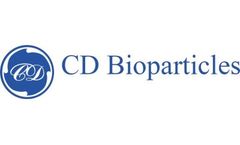Refine by
Pharmacokinetics Articles & Analysis: This-Year
12 articles found
In preclinical respiratory studies, traditional methods like plethysmography often require animal restraint and extensive acclimation, limiting their ability to capture dynamic respiratory changes. To overcome these challenges, IPS Therapeutique Inc. validated a novel telemetry-based technique for continuous monitoring of intrapleural pressure and respiratory patterns in conscious, freely ...
By masking lipophilicity, PEG linkers help highly-loaded ADCs reach their target cells with improved pharmacokinetics. l Increased Drug Loading: Hydrophilic PEG linkers enable higher DAR by solubilizing hydrophobic payloads, allowing more drug molecules per antibody. l Improved Pharmacokinetics: The PEG chain prolongs circulation. ...
This technique improves the pharmacokinetic and pharmacodynamic properties of drugs, enhancing their stability, solubility, and circulation time while reducing immunogenicity. ...
Enzyme replacement therapies are already in use for rare genetic disorders, such as Gaucher’s or Fabry’s disease, and researchers are pushing further by modifying enzymes for improved pharmacokinetics and targeting. In cancer research, engineered enzymes are being explored to activate prodrugs locally at the tumor site, minimizing systemic toxicity—a testament ...
Conclusion The Caco-2 permeability assay remains a cornerstone of pharmacokinetic studies in drug development. By providing critical insights into drug absorption, it not only informs researchers about the viability of potential therapeutic agents but also guides formulation and testing strategies. ...
These enzymes are crucial for the detoxification processes in the liver and affect the pharmacokinetics of numerous medications. Understanding the function and importance of cytochrome P450 is essential for fields ranging from pharmacology to toxicology and clinical medicine. ...
S9 metabolic stability assays provide critical insights into how a compound behaves within biological systems, especially concerning its metabolism, stability, and overall pharmacokinetics. At the core of S9 metabolic stability is the S9 fraction, which is a liver extract obtained from a homogenate of liver tissues, typically from certain rodent species. ...
They also provide invaluable insights into the pharmacokinetics and toxicity profiles of PROTAC candidates. By identifying potential off-target effects early in the development process, researchers can refine their candidates to enhance specificity and safety. ...
For instance, larger animals such as dogs or pigs are often preferred in the study of cardiology, while zebrafish provide a rapid assessment of pharmacokinetics and toxicity. Phases of Drug Screening Drug screening typically unfolds in several key phases: Preclinical Testing: Before any drug can enter human trials, it undergoes extensive preclinical testing in animal models. This ...
For example, the incorporation of phosphorus-containing moieties can enhance the pharmacokinetic properties of drugs, improving their efficacy and bioavailability. ...
In the realm of pharmaceutical research and development, ADME testing services play a pivotal role in evaluating the pharmacokinetics of drug candidates. ADME stands for Absorption, Distribution, Metabolism, and Excretion, which are critical processes that determine the fate of a drug within the body. ...
Most of the old drugs are currently limited in their effectiveness because of poor pharmacokinetics, simple clearance by the body and cytotoxicity. Nanoparticle technology in particular, Nano drug delivery system is getting a lot of attention and application in medicine in the recent years. ...







